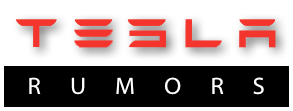TeslaRumors: How Tesla Motors Began


Tesla Motors: How it All Began



Tesla Motors: The Beginning
TM

An energy engineer by the name of JB Straubel had an interest in electric vehicles too, and while in college had designed a Hybrid Trailer System. Earlier, at the age of 14, he discovered a junked electric golf cart in a Wisconsin junkyard and decided to rebuild it, sparking his interest for energy technology and electric vehicles. He acquired a B.S. in Energy Systems Engineering and an M.S. in Energy Engineering with an emphasis on energy conversion from Stanford University. After college, he went to work for Rosen Motors as a propulsion engineer. Rosen Motors was founded in 1990 by Harold Rosen, an electrical engineer, and his brother, Benjamin Rosen. They developed a gas turbine powered hybrid powertrain with an energy storage subsystem that even used regenerative braking. Later Harold Rosen and JB Straub together founded Volacom, an aerospace firm that designed a high-altitude aircraft that used hybrid electric propulsion invented by Straub. In 2000 Straubel had converted a Porsche 944 to an electric vehicle and held a 1/4 mile word record at 17.28 seconds at 79.4 mph.
During their lunch meeting, Straubel mentioned a company called AC propulsion that had developed a prototype electric sports car using a gasoline-powered kit car. Instead, it used lithium-ion batteries and had a range of 250 miles. It also offered lots of torque and could go 0-60 in under 4 seconds.
When Musk visited AC Propulsion, he not only was demo’d the car, he also got to drive it. He was impressed. He tried to for months to convince AC Propulsion to commercialize the electric vehicle and even asked them to make one for him, but they had no interest in doing so. Instead, Tom Gage, the president of AC Propulsion introduced Musk and Straubel to another team that shared the same interest so that they together they could increase their potential for success in commercializing an electric vehicle. The other team included Martin Eberhard, Marc Tarpenning and Ian Wright. Eberhard interests grew from frustration in looking for a sports car and not being able to justify getting another gas-guzzler and seeing people who could afford high-end cars with what he called “punishment cars.” This observation started from a walk he went on one day where he observed driveways with beautiful Mercedes-Benz, BMW’s and other fine cars with ecological cars like Priuses parked next to them. He thought, why is that when someone wants to be environmentally conscious the only choice out there are budget-minded cars with limited style? Why instead of competing based on price, why not compete based on other factors such as performance and design so that an alternative fuel car could exist that people actually wanted. As Martin Eberhard and his friend Marc Tarpenning explored this, they even looked at celluosic ethanol and hydrogen fuel cells before ultimately deciding to work on the electric car.
Ian Wright, a native of New Zealand had studied telecommunications and some electrical engineering. When Wright was 10, he converted an old lawn mower into a go-kart. That interest matured to an interest in real automobile racing. He earned his racing license in 1989 and practiced the sport until 1993 when he moved to California. He was working at Ditech in charge of over 100 engineers who were building a scalable optical switching system. That company ultimately went bust with with the recession. He was then planning to start his own optical subsystems company but was not having success in getting any venture capital. Fortunately, one day his neighbor, Martin Eberhard, started to chat about having just incorporated a electric car manufacturing company. Wright thought the idea was far-fetched but did the neighborly thing and offered to take a look at Eberhard’s business plan. Wright never imagined that he was about to read a document that would would enable him to work together with electronics, software and cars. This was a dream!By the end of the year, Wright abandoned his optical switching company.
They joined forces that year and formed Tesla Motors Inc. Straubel became CTO, Eberhard became CEO, Marc Tarpenning became CFO, and Elon Musk became the Chairman and the Head of Product Design. Ian Wright became Tesla Motors’ first employee as VP of Vehicle Development. Musk provided the majority of funds for the startup with $7.5 million of his own personal cash in the first round of capital investment as well as contributing to subsequent rounds. Other investors in the first round of funding included Compass Technology Partners and SDL Ventures. After five rounds of funding, Tesla Motors had raised $187 million. Among later investment partners were Google cofounders, Larry Page and Sergey Brin as well as Jeff Skoll, eBay’s former President.
Creating a new car company was not easy. In the United States, all car companies had a 100-year history and since that time no one had tried. Clearly, starting a car company was challenging and it required a great deal of capital; in fact 5 times more than they expected. Nevertheless, Tesla Motors produced 2500 Roadsters and are on their way to producing their next car, the Model S in mid-2012 which as of Dec 1, 2011, already has over 8000 reservations. This startup showed other car makers that creating electric vehicles was viable. This became truly evident in 2009 when Bob Lutz, former CEO of General Motors said, “If some Silicon Valley startup can solve this equation, no one is going to tell me anymore that it’s unfeasible.”
In June 2010, Tesla Motors went public. The rest is history... still in the making.
In March of 1999, Elon Musk co-founded X.com, an online financial services company that offered payments via email. A year later, X.com merged with Confinity, a Palm Pilot payments and cryptography company. After the merger, they initially kept the X.com name. Consumer surveys, however, revealed that the name x.com was perceived as either too vague or having to do with adult-oriented content. So shortly thereafter, the name was changed to Paypal. In October 2002, eBay acquired Paypal for $1.5 billion in stock after having lackluster success with BillPoint, their own attempt at an online payment system. Elon Musk, owned 11.7% of Paypal’s shares before its sale. According to a USA Today article, in April 2003 his net-worth was estimated to be $200 million
By 2002, Elon Musk had launched SpaceX, a space transport business, and had made his interest in Space and in electric vehicles public. So in 2003, JB Straub phoned Musk and invited him to meet so that they could discuss space and electric car related interests. JB Straub was interested in discussing electric cars, and may have strategically invited his former employer and partner, Harold Rosen to the meeting as well, since Harold Rosen was not only involved in cars technology, but also happened to also be the “father of the geostationary satellite.” Rosen led the team that designed and built the first geosynchronous satellite, which was successfully launched in 1961.
Where did the name “Tesla” come from in “Tesla Motors” ?

So why are we all using AC current if so much of our electronics runs on DC current? It’s because DC current has a limitation; it can’t travel very far, because in DC power, electrons move too quickly creating lots of friction and thus run out of the pressure to push itself far through a conductor. It can only travel about half a mile. Because of this, when Edison invented his light bulb, in order to supply homes with the electricity to be able to use his new invention, he had to build power plants on every block!

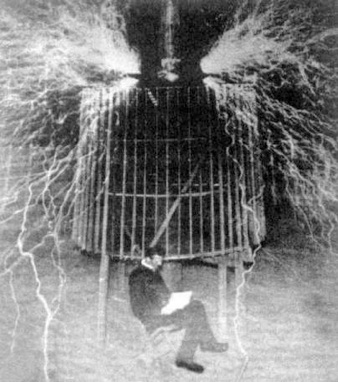
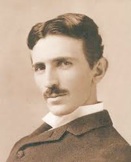
His inventions don’t stop there. In 1894 he demonstrated wireless communication in what we know today as the radio. Next time you pick up your remote control for your television, think about Mr. Tesla, because in 1898, he too invented the technology to remotely control devices via radio frequencies. In 1887 he created a single electrode X-Ray tube and published a paper discussing it in April of that year.
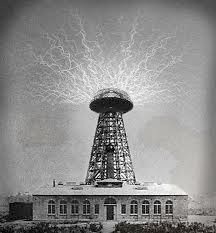
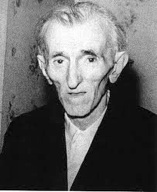
He died in 1943 in a world that had almost forgotten him. Edison, instead became known as the wizard of electricity. Tesla was not much of a businessman and Edison knew how to use the media to promote his inventions and himself. Tesla wasn’t diligent about patenting his inventions either.
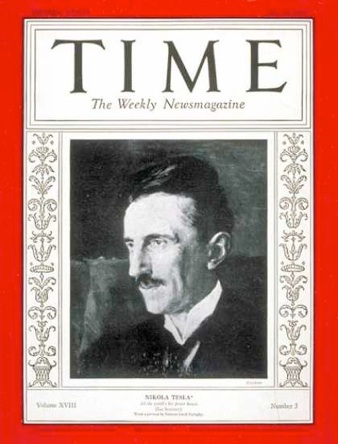
Tesla Motors made an admirable choice in naming its car company in his honor. After all, Tesla invented all things electric, and Tesla motors develops cars that are all electric. We applaud you Tesla Motors for honoring an electrical genius that modernized our world.


This goal of commercializing the electric car would take lots of capital. Ironically, just two days after being at Stanford, he dropped out and ended up on a wealth-building journey between 1995 and 2002 that enabled him to earn the funds he needed in the first place to make this goal (and others) a reality. When he dropped out, he did so to start Zip2, a content publishing company for news organizations, along with his brother, Kimbal Musk. He thought a graduate degree would not get him any closer to achieving his goals. Zip2 was purchased in 1999 by Compaq’s AltaVista division for $307 million.

Copyright © 2012 TeslaRumors.com All rights reserved.


The Signature Model S is now Sold Out!
New Car Value Index Reveals Best Deals
The Signature Model S has a $3,550 Premium
Model S Options and Pricing Observations
Modei S Options may be disclosed on Dec 15
Tesla Reinvents the Car Buying Experience
Did I realy just buy a car online?
Tesla Opens 3 News Stores in Malls







TeslaRumors.com is not affiliated with Tesla Motors, Inc.
The Tesla Motors logo is a registered trademark of Tesla Motors, Inc.
TM
VISITORS
